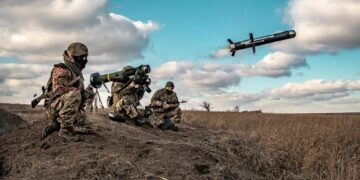Ukraine is facing an invasion from the east. The second biggest country on our continent with an area of nearly 604 thousand square kilometers is being conquered by the Russian army from several directions. The breadbasket of Europe has been turned into a giant warehouse of military equipment of all kinds.
Due to their shared history, both sides are using similar technology from the Soviet era. Howitzers, for example, often face each other, which differ only in the varying degrees of modernization and, most importantly, the much-publicized markings on Russian vehicles.
While Russia (so far) dominates the skies and wins in destructive missile power and quantity, the Ukrainian defences are nevertheless bolstered again by anti-aircraft and anti-tank small arms complexes from the West, Turkish drones and, undoubtedly, by military intel from NATO and the US. Let’s take a look at some of these weapons in the following few chapters.
Thermobaric, vacuum, fuel-air, aerosol… It has many names and no established terminology. In any event, it’s the biggest bogeyman of the fighting in Ukraine, with speculation from the outset as to whether or not Russian forces actually used it.
Its destructive power makes it the most powerful weapon on the front – above that, there are only Dresden-style carpet bombing and, of course, tactical and strategic nuclear weapons.
As its name implies, the destroyer, in this case, is either the dispersed aerosol of hydrocarbon fuel, which is then ignited by secondary explosions or the expulsion of solid and burning particles of explosive and all sorts of impurities into the surroundings.
Thermobaric weapons have their best effect in confined spaces (bunkers, caves, etc.) where there can be no escape from the destructive force. In an open area, their power decreases by rapid burnout. Still, it’s a real devil on the battlefield that deserves an article of its own.


















































Discussion about this post